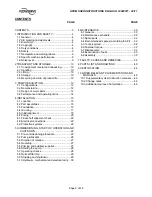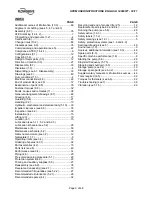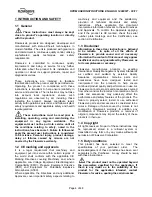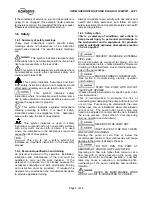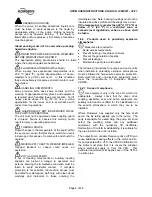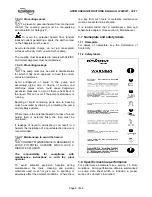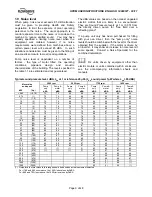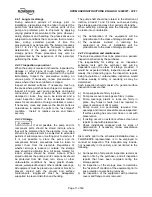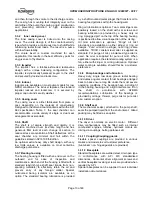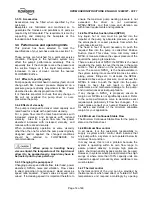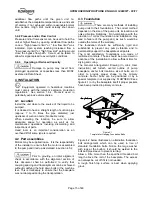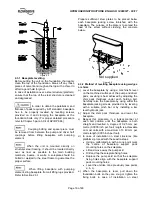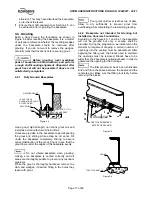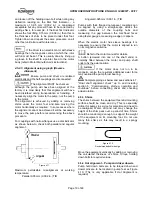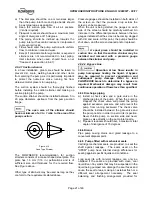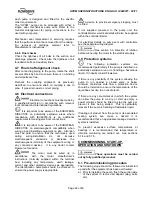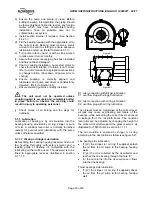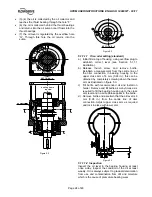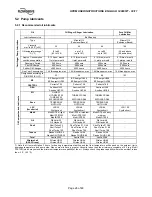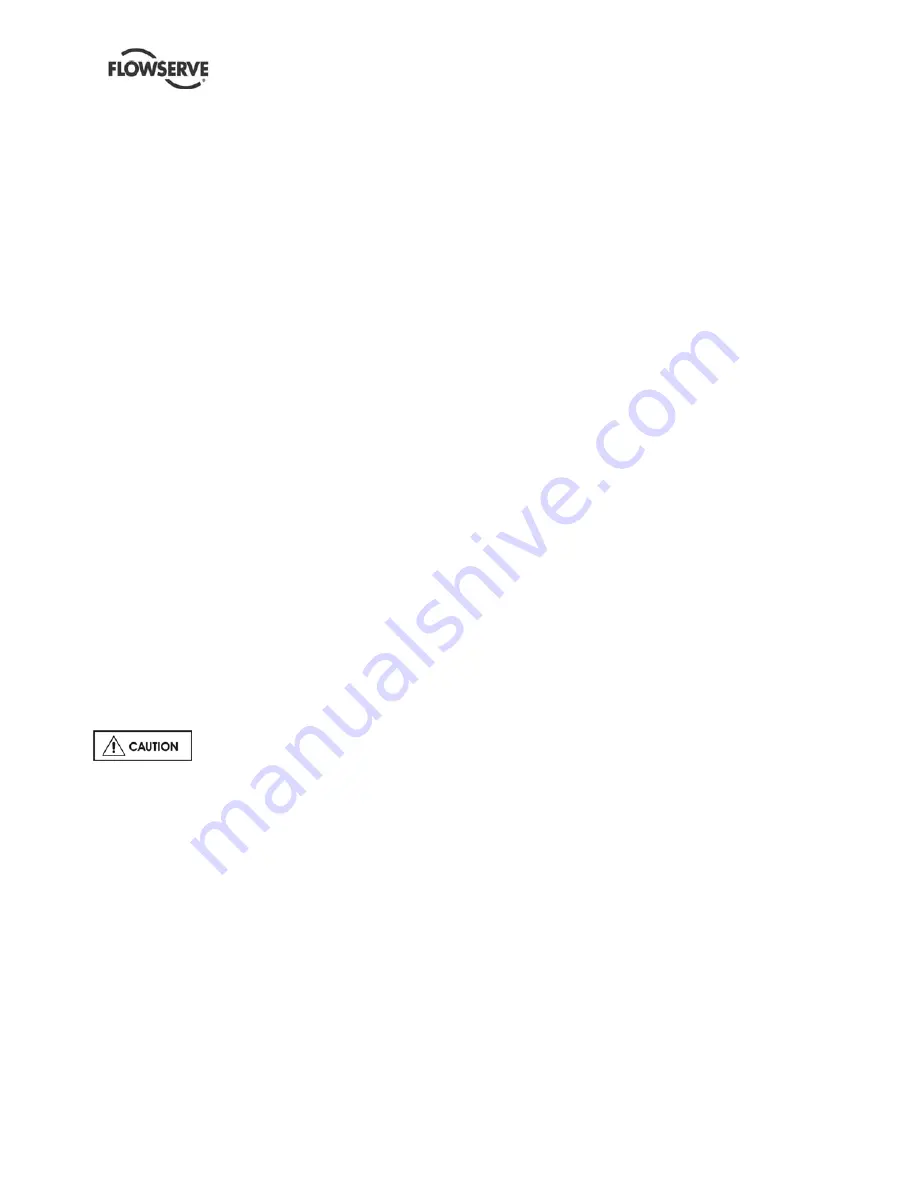
HPXM USER INSTRUCTIONS ENGLISH 14983571 - 03/11
Page 11 of 48
2.4.1 Long term storage
During extended periods of storage prior to
installation, precautions must be taken to protect the
pump from deterioration. The various parts of the
pump are protected prior to shipment by applying
varying grades of preservative to the parts. However,
during shipment and handling the preservatives are
subjected to conditions that can cause their removal.
Also, during extended periods of time the
preservatives may deteriorate. The listed procedures
(2.4.1.1 to 2.4.1.5) should be followed to prevent
deterioration of the pump during the extended
storage period. These procedures may also be
supplemented by the experience of the person(s)
performing the tasks.
2.4.1.1 Inspection upon arrival
When the pump is received it should be inspected for
damage or other signs of rough
handling. If any
damage is found it should be reported to the carrier
immediately. Inspect the preservative coating on
various parts. If necessary, renew preservative in
areas where it has been rubbed or scraped.
Inspect all painted surfaces. If necessary, touch up
the areas where paint has been chipped or scraped.
Inspect all covers over pump openings and piping
connections. If covers or seals for the covers are
damaged or loose, they are to be removed, and a
visual inspection made of the accessible interior
areas for accumulation of foreign materials or water.
If necessary, clean and preserve the interior parts as
noted above to restore the parts to the "as shipped"
condition. Install or replace covers and fasten
securely.
2.4.1.2 Storage
If at all possible, the pump and its
component parts should be stored indoors where
they will be protected from the elements. In no case
should any pump element be subjected to extended
periods of submergence or wetting prior to start up. If
it is not possible to store the pump and its
components indoors, precautions must be taken to
protect them from the elements. Regardless of
whether storage is indoors or outside, the storage
area should be vibration free. All boxes marked for
indoor storage should be stored indoors. When
stored outdoors the pump and its components should
be protected from dirt, dust, rain, snow, or other
unfavourable conditions by heavy plastic sheets,
canvas, waterproof burlap or other suitable coverings.
All equipment must be placed upon skids or blocks to
prevent contact with the ground and surface
contaminants. Equipment must be adequately
supported to prevent distortion and bending.
The pump shaft should be rotated, in the direction of
rotation, at least 1 and 1/4 turns each week during
the storage period and any other periods of stand by.
When selecting a storage area the following should
be taken into consideration.
a) The deterioration of the equipment will be
proportionate to the class of storage provided.
b) The expenses involved in restoring the
equipment at time of installation will be
proportionate to the class of storage provided.
2.4.1.3 Inspection and maintenance
The stored equipment has to be placed on a periodic
inspection schedule by the purchaser.
The responsibility for setting up an inspection
schedule rests with the purchaser and will be
dependent upon the class of storage provided. It
would be expected initially, inspection would occur
weekly, then depending upon the inspection reports
being favourable or unfavourable, inspection would
continue weekly, monthly, or quarterly, as may be
determined.
Each inspection should consist of a general surface
inspection to assure that:
a) Pump supports are firmly in place.
b) Pump covers over openings are firmly in place.
c) Pump coverings, plastic or tarps are firmly in
place. Any holes or tears must be repaired to
prevent entrance of dirt or water.
d) Pump covers are periodically removed from
openings and interior accessible areas inspected.
If surface rusting has occurred, clean or coat with
preservative.
e) If rusting occurs on exterior surfaces clean and
repaint or coat with preservative.
f) Check individually wrapped parts for signs of
deterioration. If necessary, renew preservative
and wrapping.
Six months prior to the scheduled installation date, a
FLOWSERVE representative is to be employed to
conduct an inspection. This inspection may include,
not necessarily in its entirety and not limited to the
following:
a) An inspection of all periodic inspection records as
kept on file by the purchaser, and all inspection
reports that have been compiled during the
storage period.
b) An inspection of the storage area to determine
the "as stored" condition of the equipment prior to
any protection covers being removed.
c) An inspection of the equipment with protective
covers and flange covers removed.


